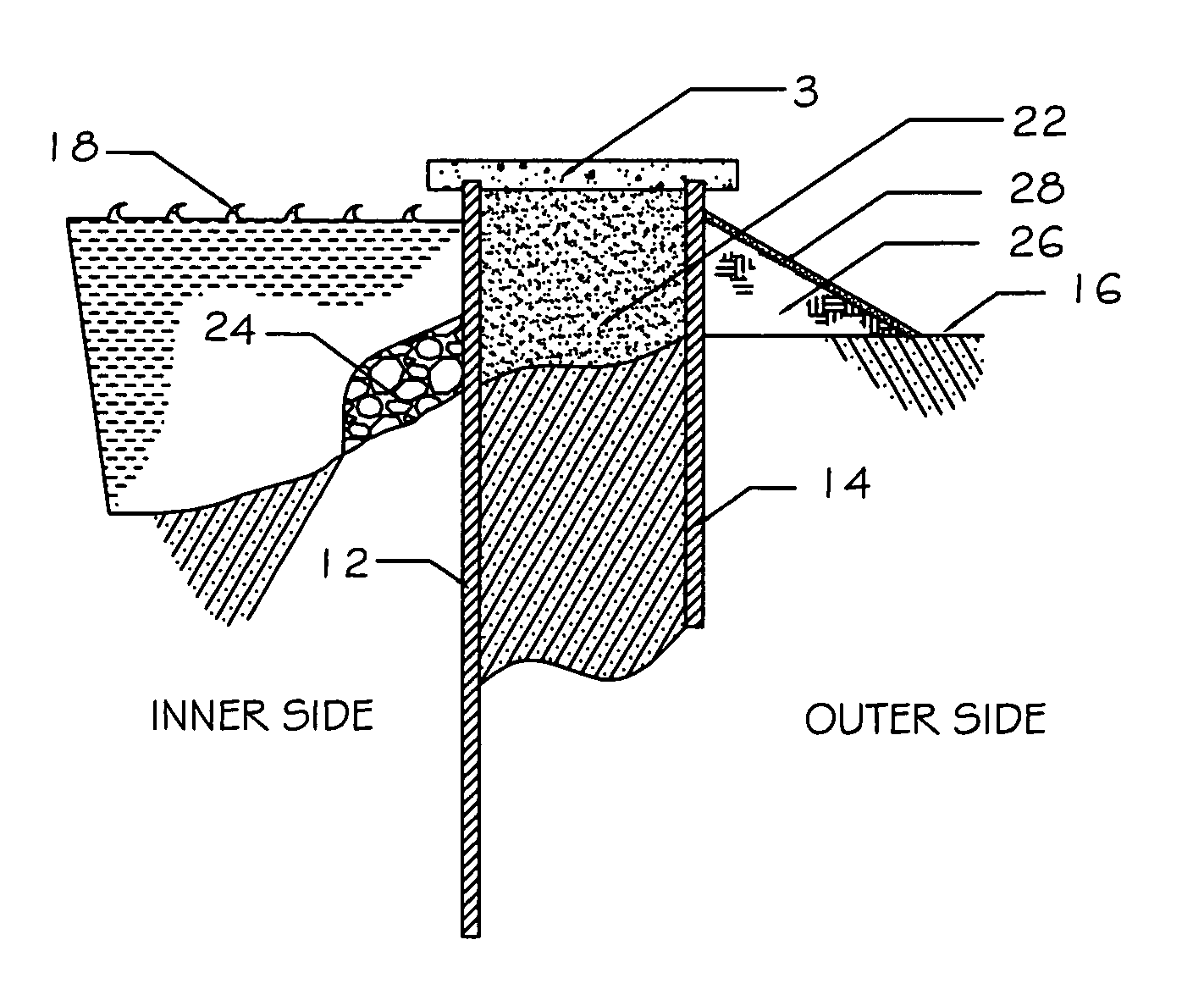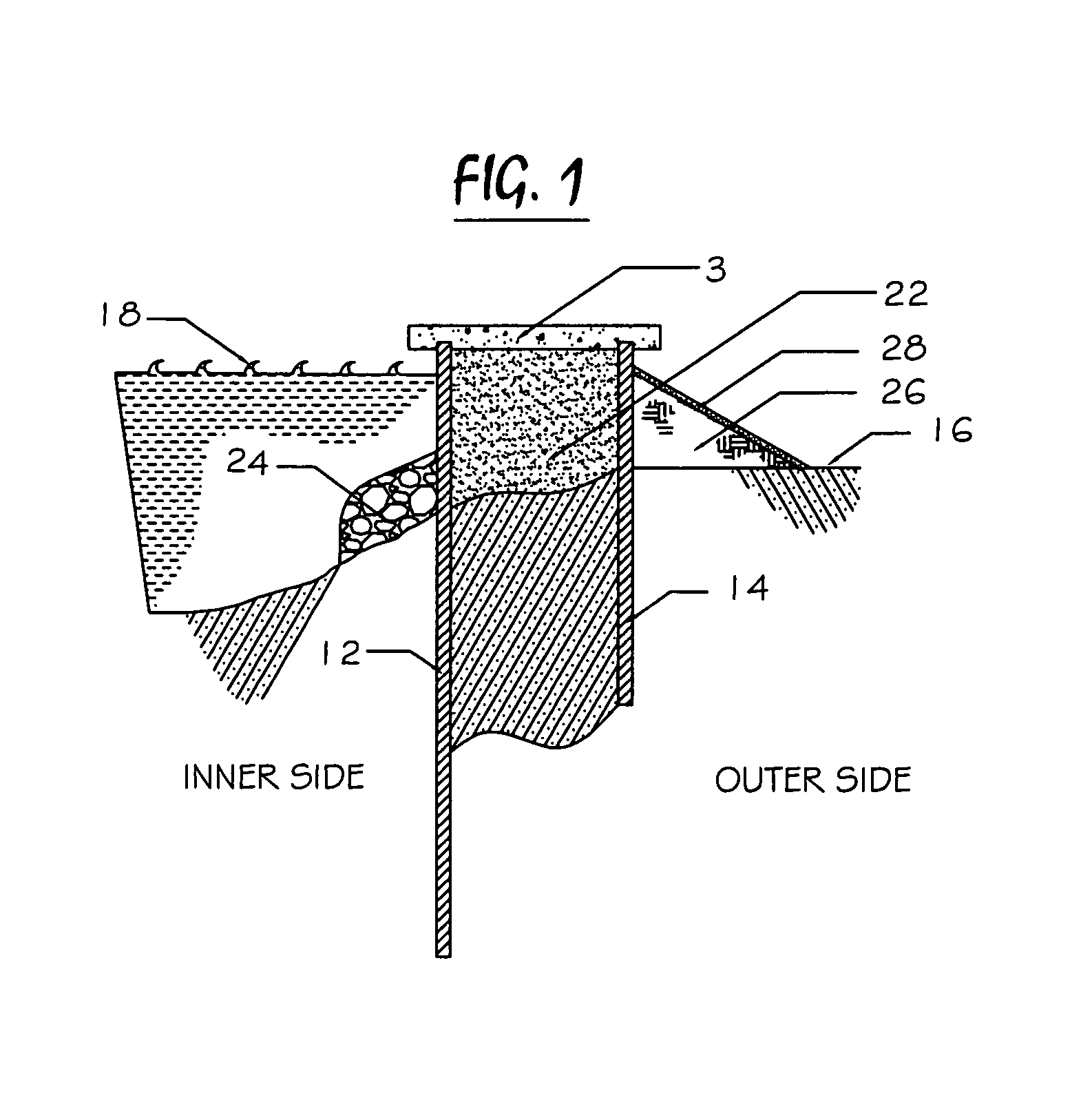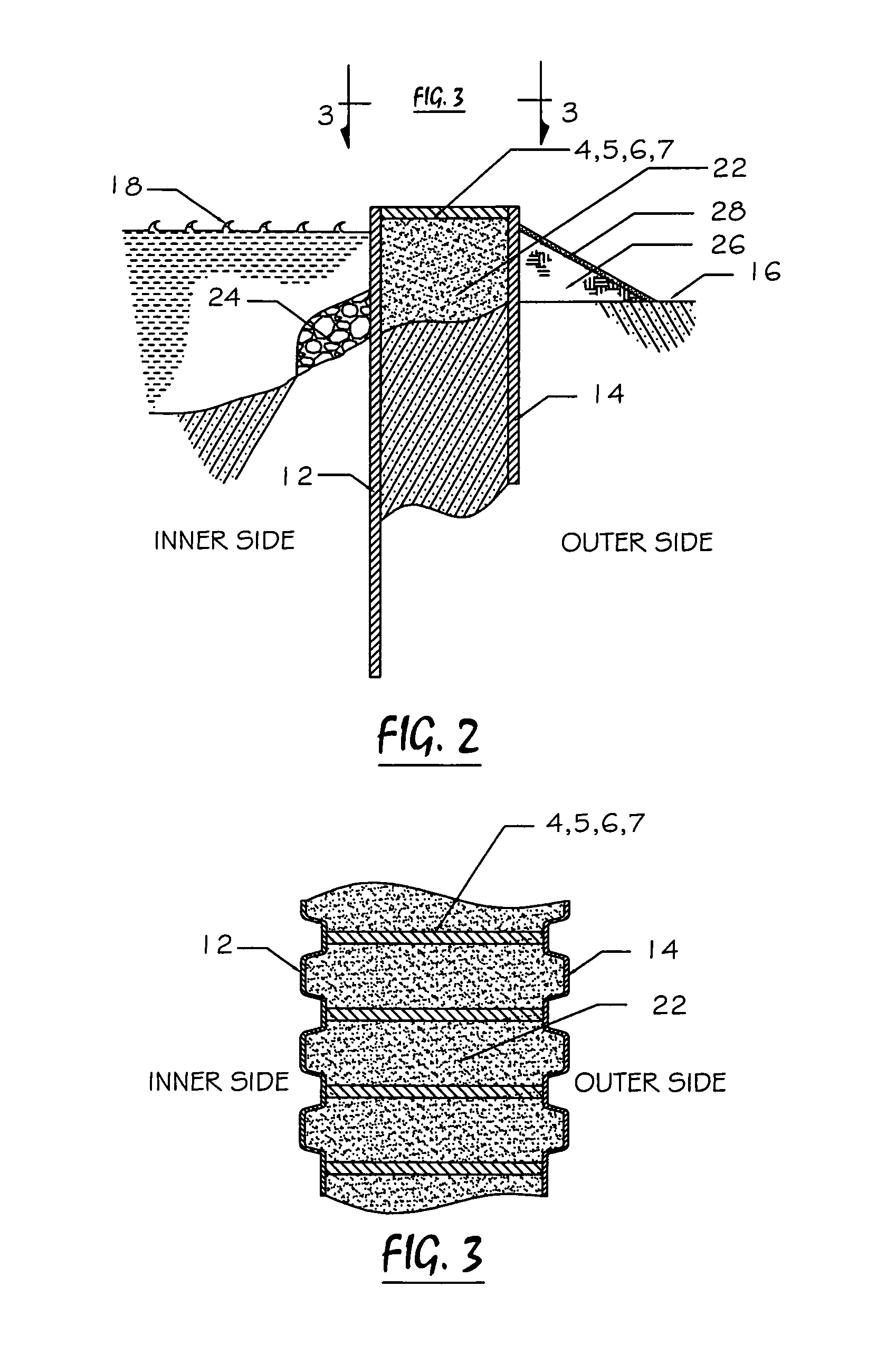Double-wall protection levee system
a technology of double-wall protection and levees, applied in excavations, artificial islands, foundation engineering, etc., can solve the problems of altering the amount of ground penetration needed, and achieve the effects of reducing transverse movement, increasing the resistance of the connected pair of piles, and protecting against scour
- Summary
- Abstract
- Description
- Claims
- Application Information
AI Technical Summary
Benefits of technology
Problems solved by technology
Method used
Image
Examples
Embodiment Construction
[0023]A pair of piles, inner pile 12, also referred to as tension pile 12, and outer pile 14, also referred to as compression pile 14, are substantially flat, sheet-type piles. Piles 12 and 14 are placed, preferably by driving, into natural ground 16 at the bank of water body 18 (shown as a canal) or, alternatively, into a levee at the bank of a water body. Piles 12 and 14 are preferably made of sheet steel, but they can also be made of wood, plastic, concrete, or a polymer. Pairs of piles 12 and 14 are oriented with broad, sheet faces parallel to each other and are positioned transversely, that is they are separated by approximately three feet to approximately twenty feet.
[0024]As shown in FIG. 1, piles 12 and 14 are rigidly connected together by a connector, preferably reinforced concrete cap 3. In the alternative embodiment depicted in FIGS. 2 and 3, strut 4, either steel beam 5 or steel pipe 6 or tube 7 can be used to connect piles 12 and 14 together. The connector preferably ha...
PUM
 Login to View More
Login to View More Abstract
Description
Claims
Application Information
 Login to View More
Login to View More - R&D
- Intellectual Property
- Life Sciences
- Materials
- Tech Scout
- Unparalleled Data Quality
- Higher Quality Content
- 60% Fewer Hallucinations
Browse by: Latest US Patents, China's latest patents, Technical Efficacy Thesaurus, Application Domain, Technology Topic, Popular Technical Reports.
© 2025 PatSnap. All rights reserved.Legal|Privacy policy|Modern Slavery Act Transparency Statement|Sitemap|About US| Contact US: help@patsnap.com



